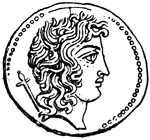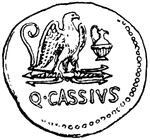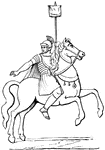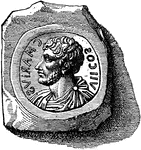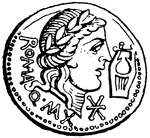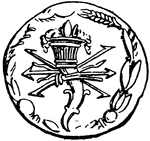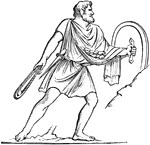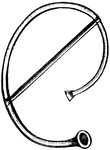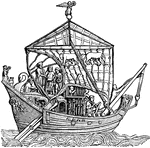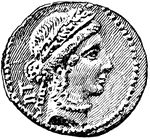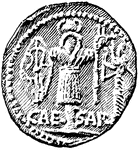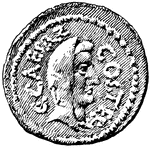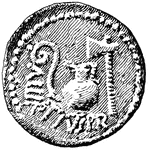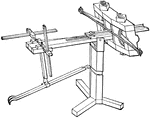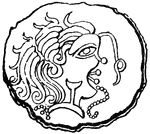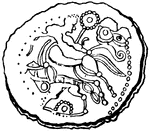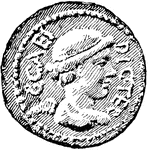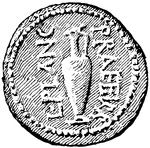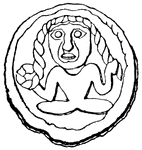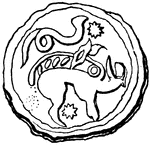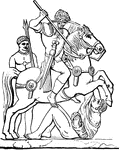
Cavalryman Charging
Charging cavalryman pictured trampling an enemy soldier and holding a spear in the Gallic War.
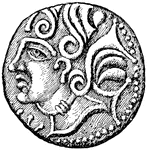
Coin of Diviciacus
The Coin of the King of the Suessiones, Diviciacus, with bust on front and prancing horse on back. Front.
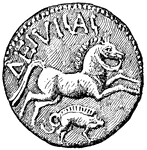
Coin of Diviciacus
The Coin of the King of the Suessiones, Diviciacus, with bust on front and prancing horse on back. Back.

Vinea
A Vinea, or Testudo, a small structure framed with wood used to protect soldiers attacking city walls.

Roman Centurion
A Centurio was a low-to-middle ranking officer in charge of a "century," ideally 100 men but ranging…
Roman Siege Works
A Roman Siege Works, with A and B, a double wall; C, C, C, Vineæ; D, an Agger; E, a movable tower;…

British Coin
British coin of the time period of the Roman invasion in the Gallic War, B.C. 54. Front.

British Coin
British coin of the time period of the Roman invasion in the Gallic War, B.C. 54. Back.
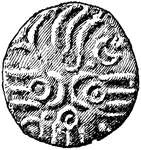
British Coin
British coin of the time period of the Roman invasion in the Gallic War, B.C. 54. Front.
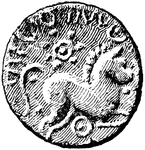
British Coin
British coin of the time period of the Roman invasion in the Gallic War, B.C. 54. Back.

Paludamentum
"The cloak worn by a Roman general commanding an army, his principal officers and personal attendants,…
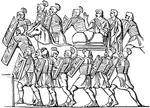
Hollow Square
Military formation of the Romans, also agmen quadratum. Square formation with no troops in the middle.
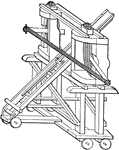
Ballista
The Ballista is a device for throwing large darts very accurately. The Roman Ballistas threw stones…
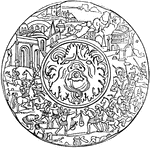
Parma
"A round shield, three feet in diameter, carried by the celites in the Roman army. Though small, compared…

Gallic Torques
Gallic Torques were heavy necklaces of braided metal. Gauls carried their wealth in the form of Gold…
